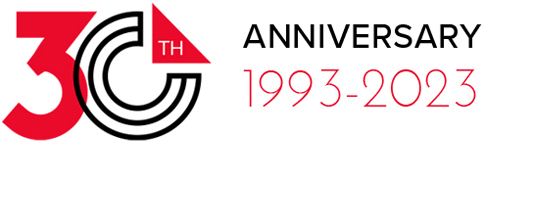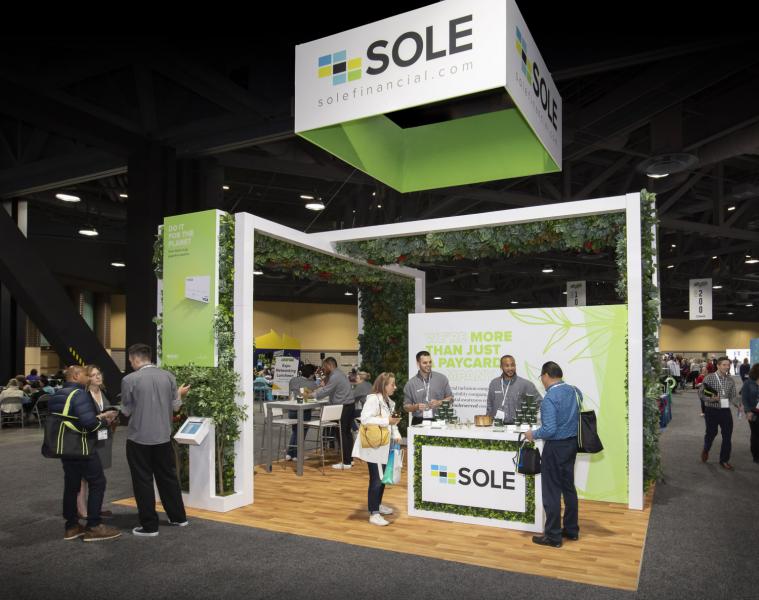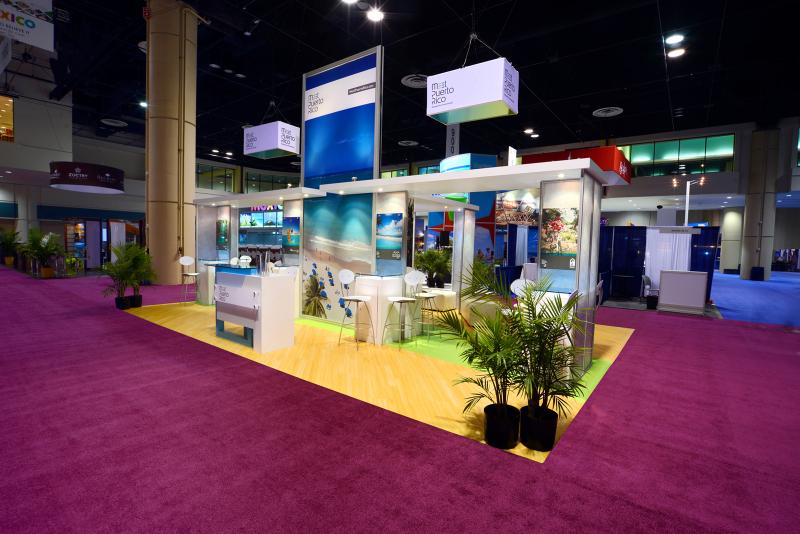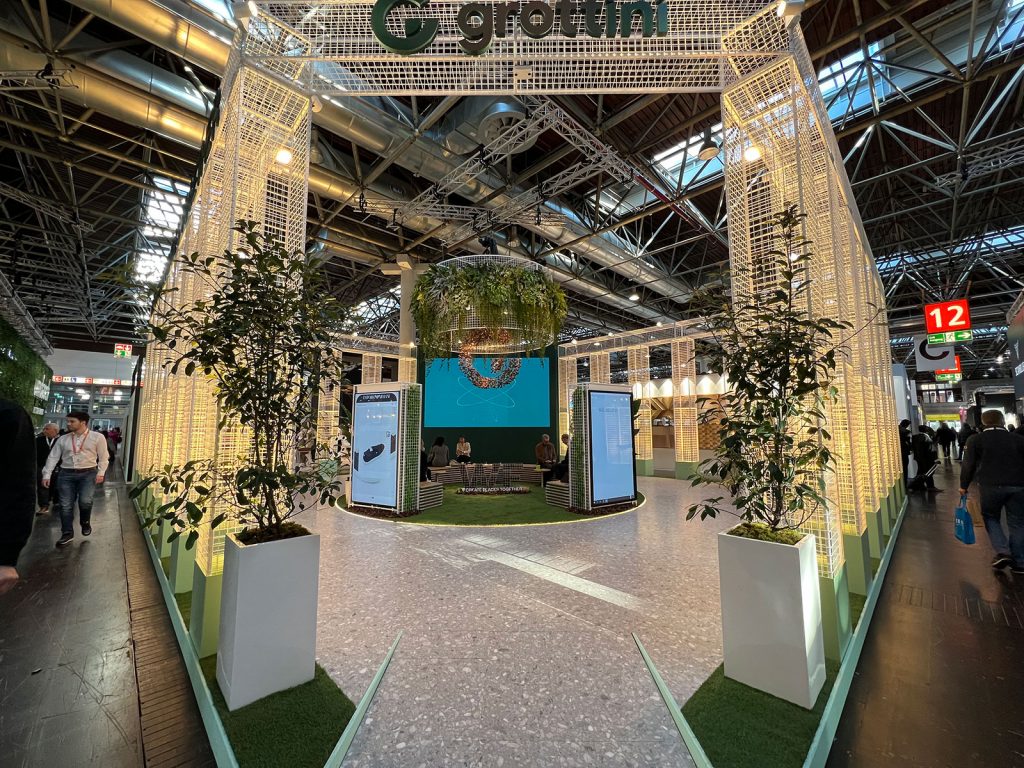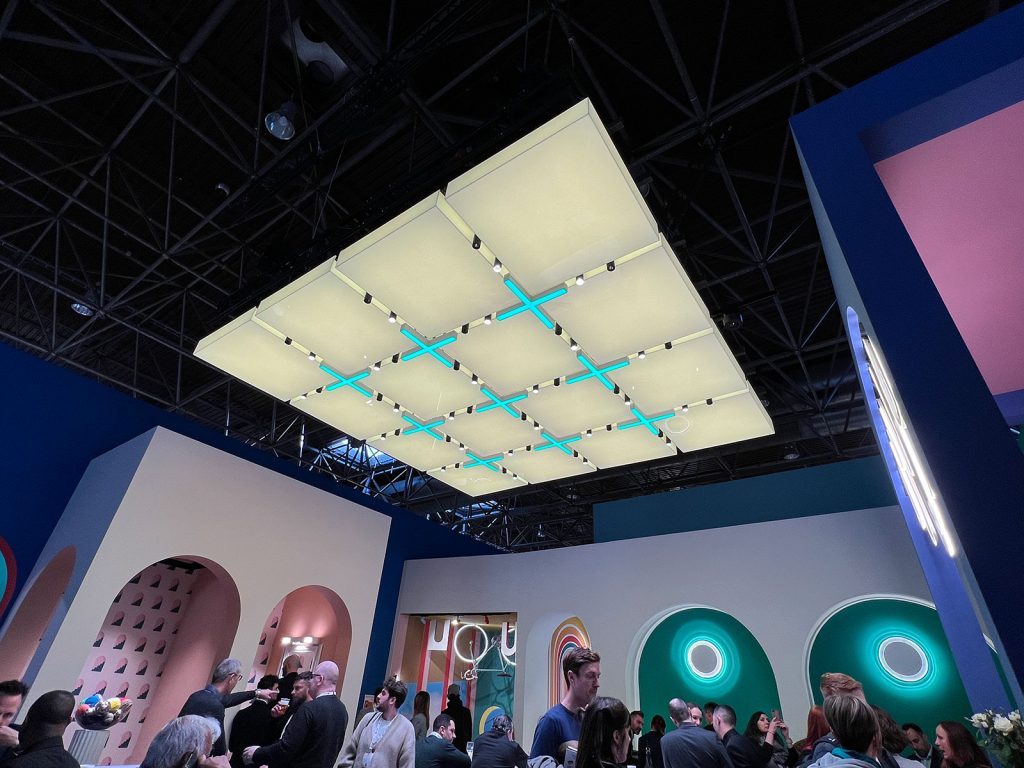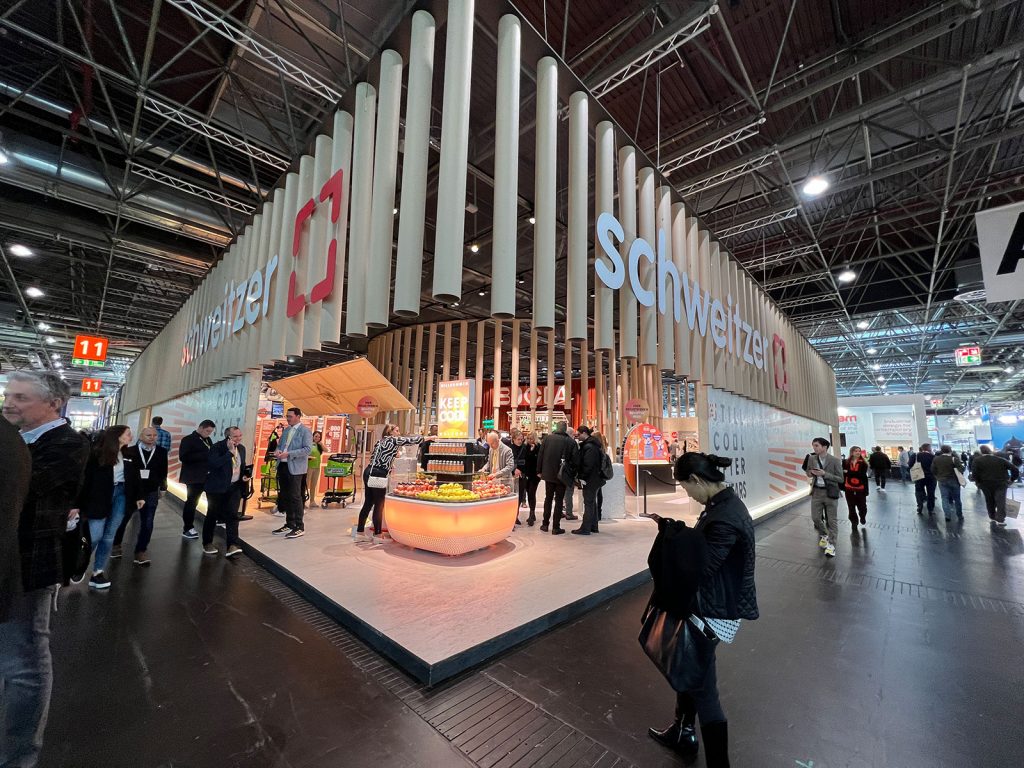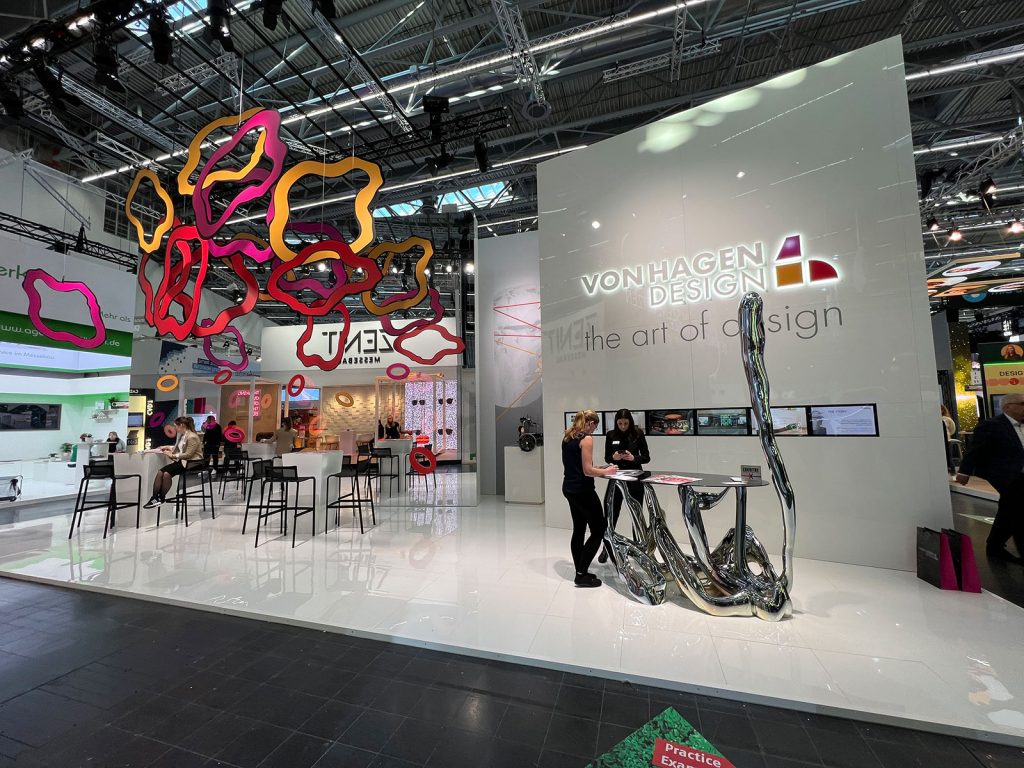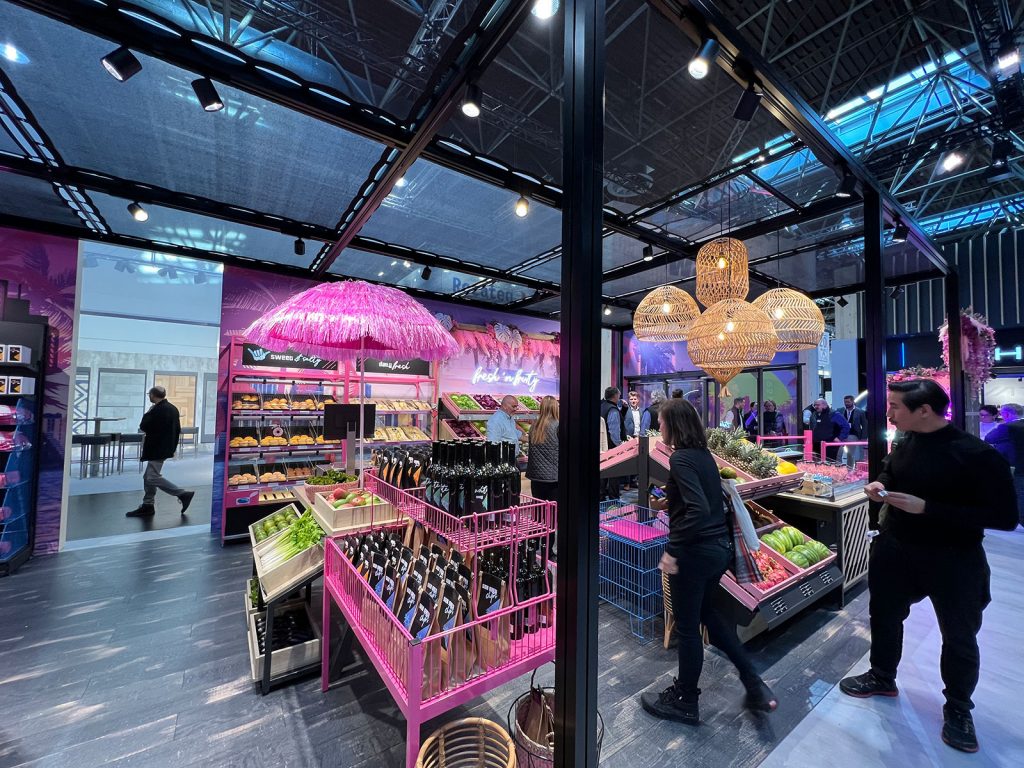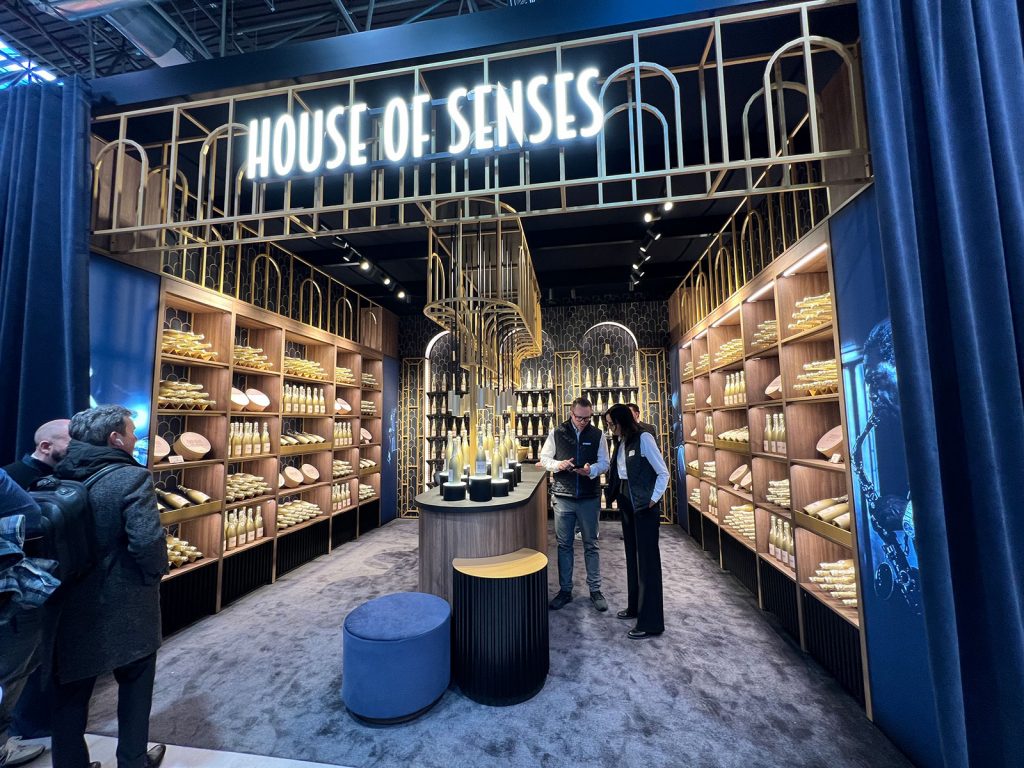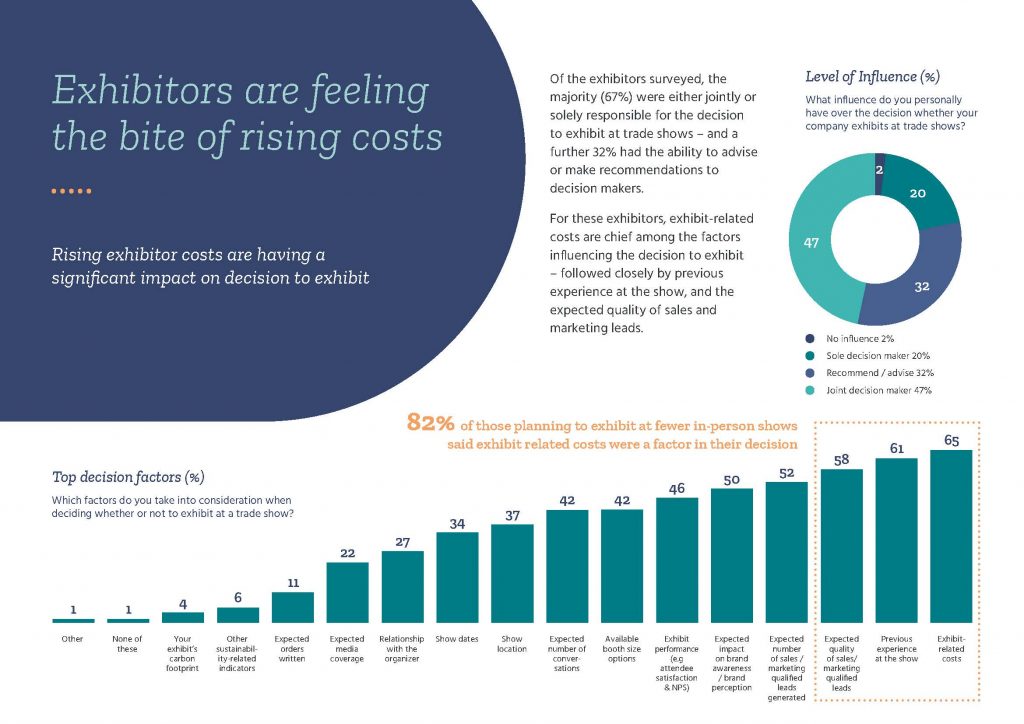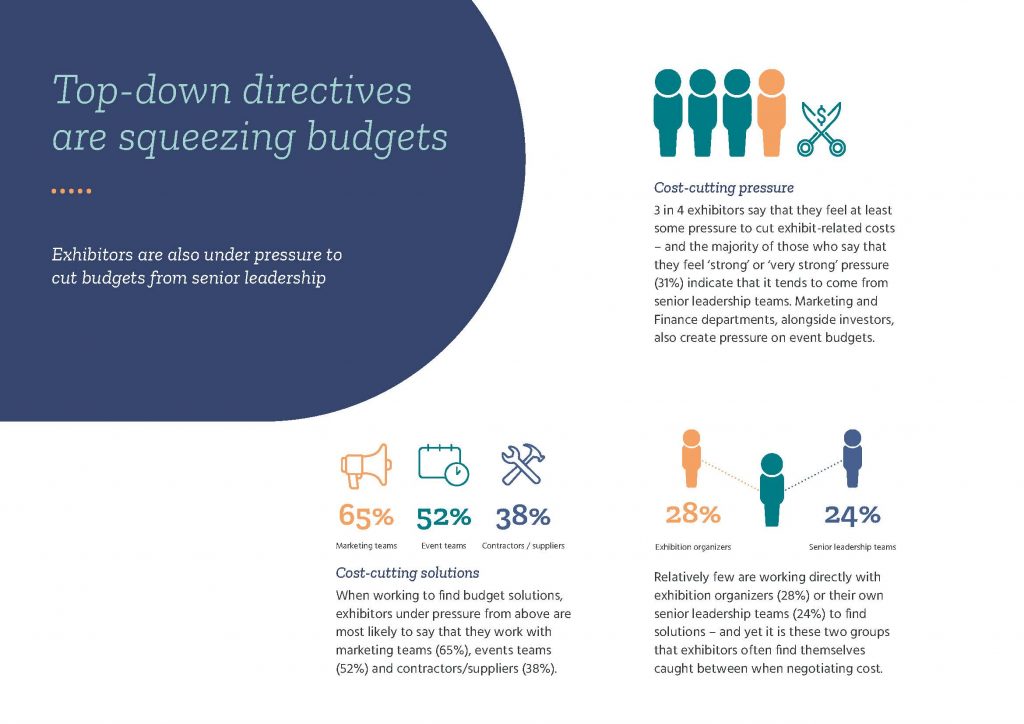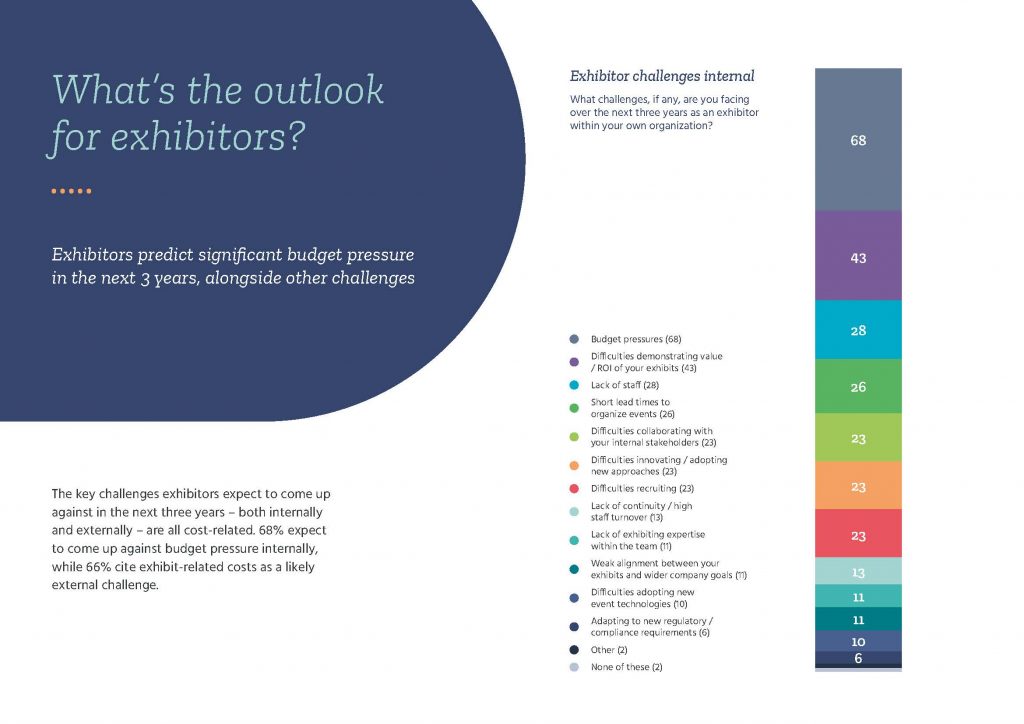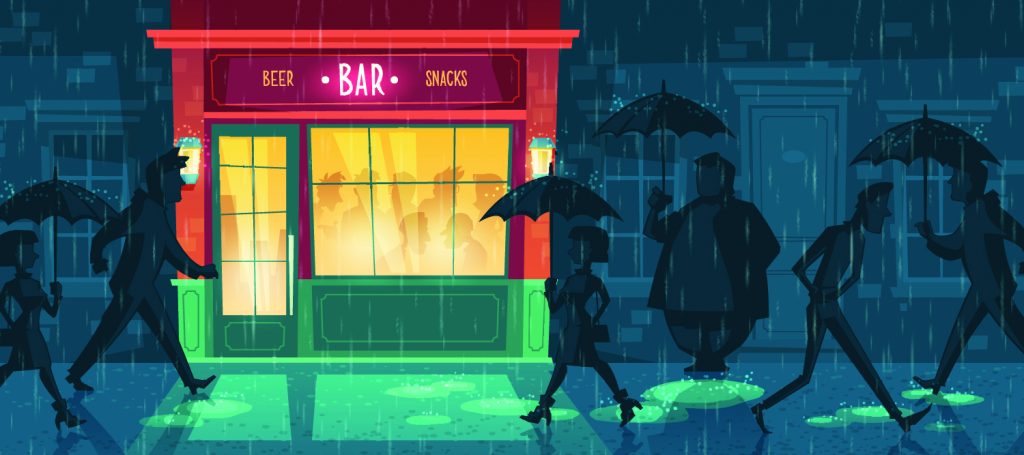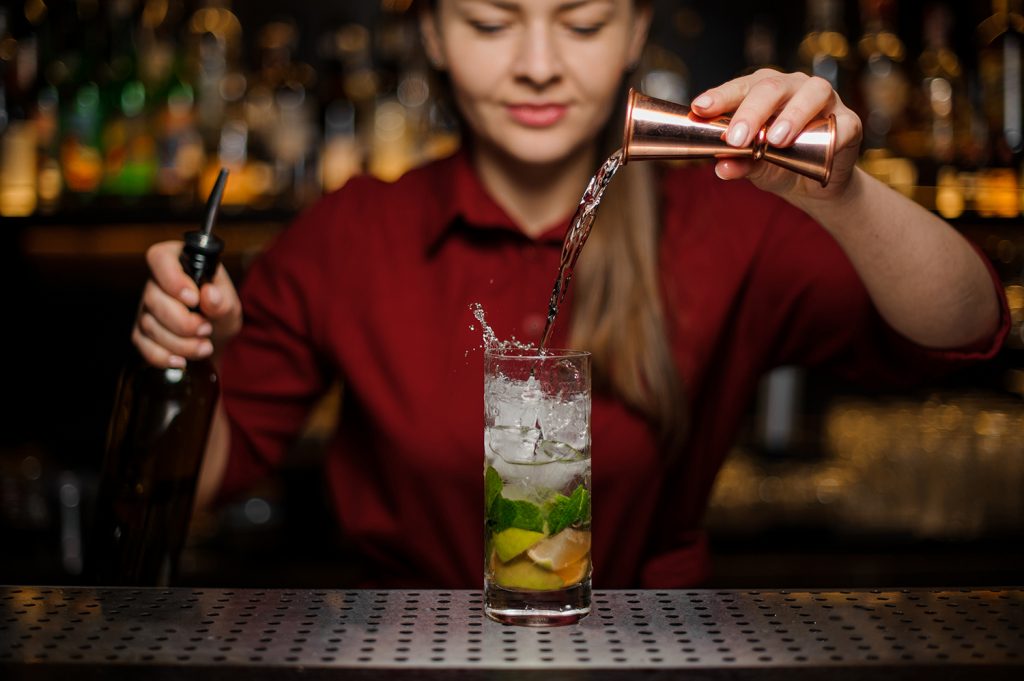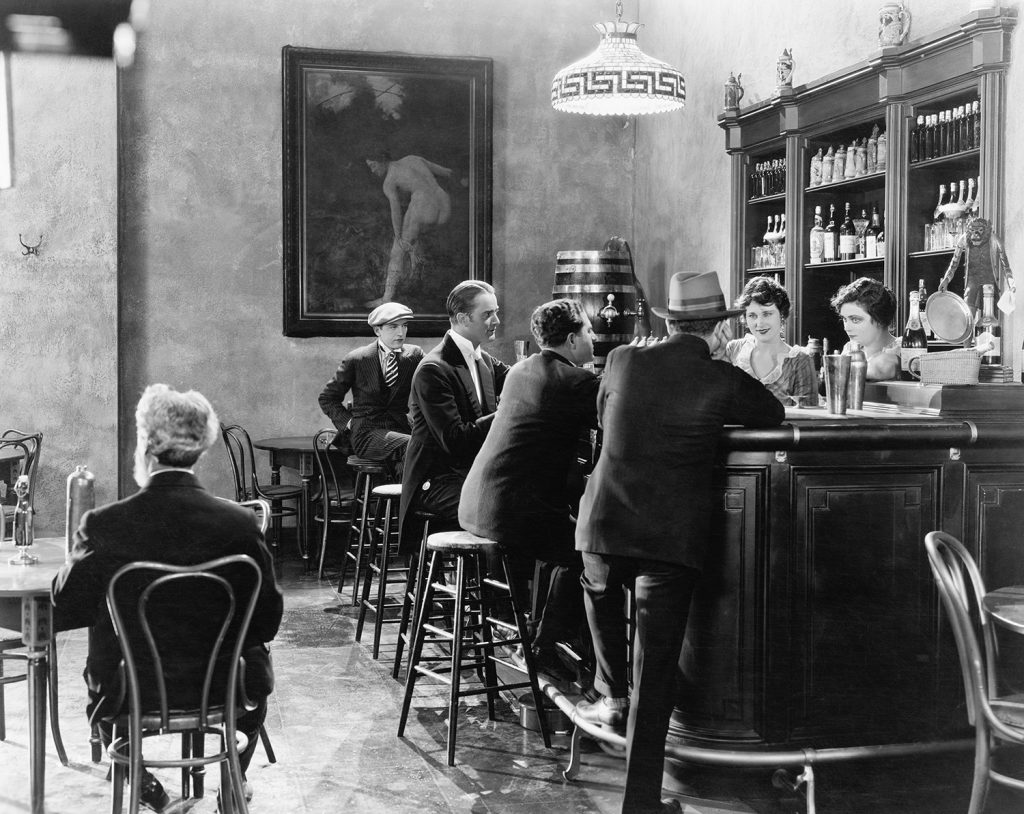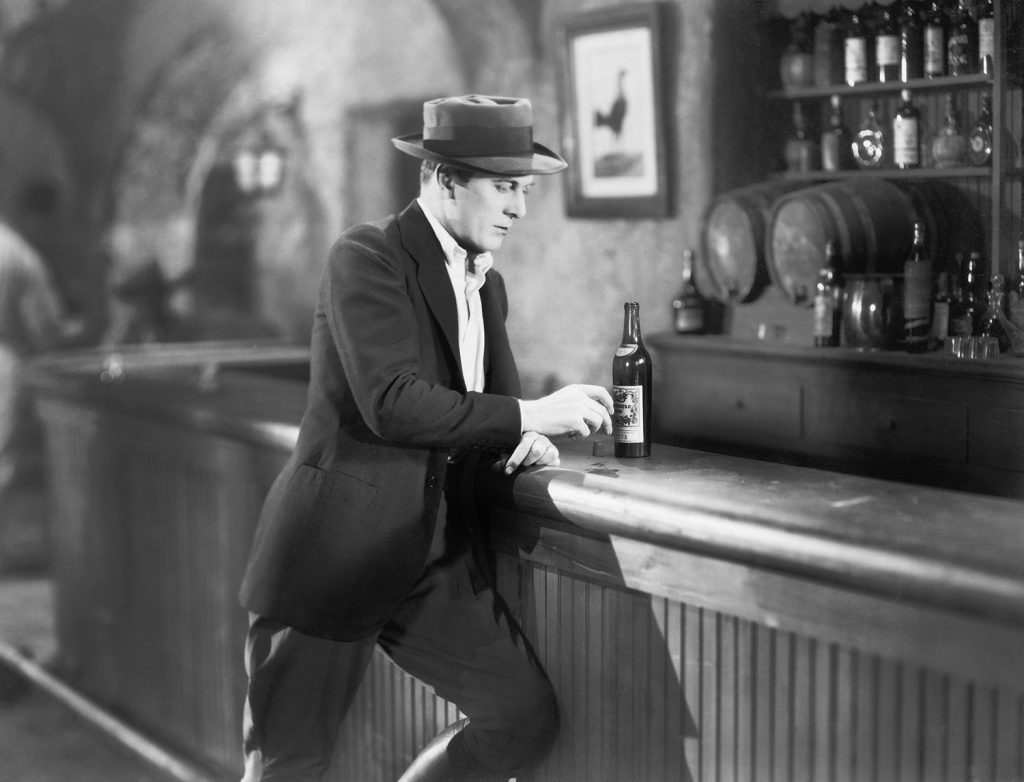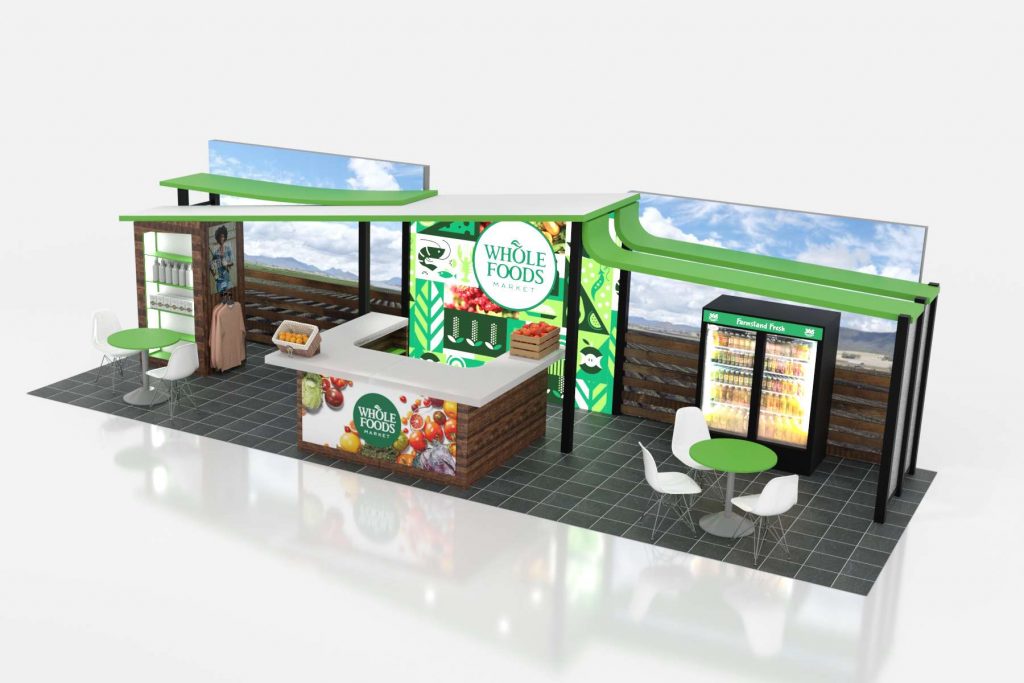
The trade show exhibit industry loves the word “modular.” And specifically, the phrase “modular trade show booth (or exhibit).” It’s a flexible term (pun intended), which can describe a $3000 portable inline display or a $300,000 custom island exhibit. Both are technically modular since they can be built using modular components or designed to reconfigure to another size or shape.
In other words, modular, as a feature and/or a benefit, depends on the context. Understanding the context is important when shopping for an exhibit and knowing what questions to ask the display provider – whether you’re shopping on a display website or meeting face-to-face with a local exhibit house.
Modular Trade Show Booth Options: An Overview
While modular exhibit designs have always been popular, more exhibitors are requesting modularity as one of their purchase requirements because of tight marketing budgets and rising trade show costs. They need solutions that offer more “bang for the buck.” This typically comes down to two things: 1. The ability to expand or contract a display depending on the show and 2. The ability to pack and assemble a display quickly and efficiently using a catalog of interchangeable and replaceable components.
Ask yourself, how much modularity do you really want? If all you really want is a 20 ft. inline display that configures down to a 10 ft. display . . . that’s easy. There are lots of choices from basic to boffo. However, if your goal is to transform a 20 x 30 island into a 20 x 20 island, a 10 x 20 inline, a 10 x 10 inline, and a tabletop display, then it gets considerably more complicated.
There are multiple ways to achieve that goal. The end result, however, may resemble a hippo-elephant-donkey-cat. And, if you’ve ever spent any time breaking down an exhibit at the end of a show, you know that the best-laid plans of organizing all those parts and pieces for the next “smaller” show is often sacrificed to make your 7:15 p.m. flight.
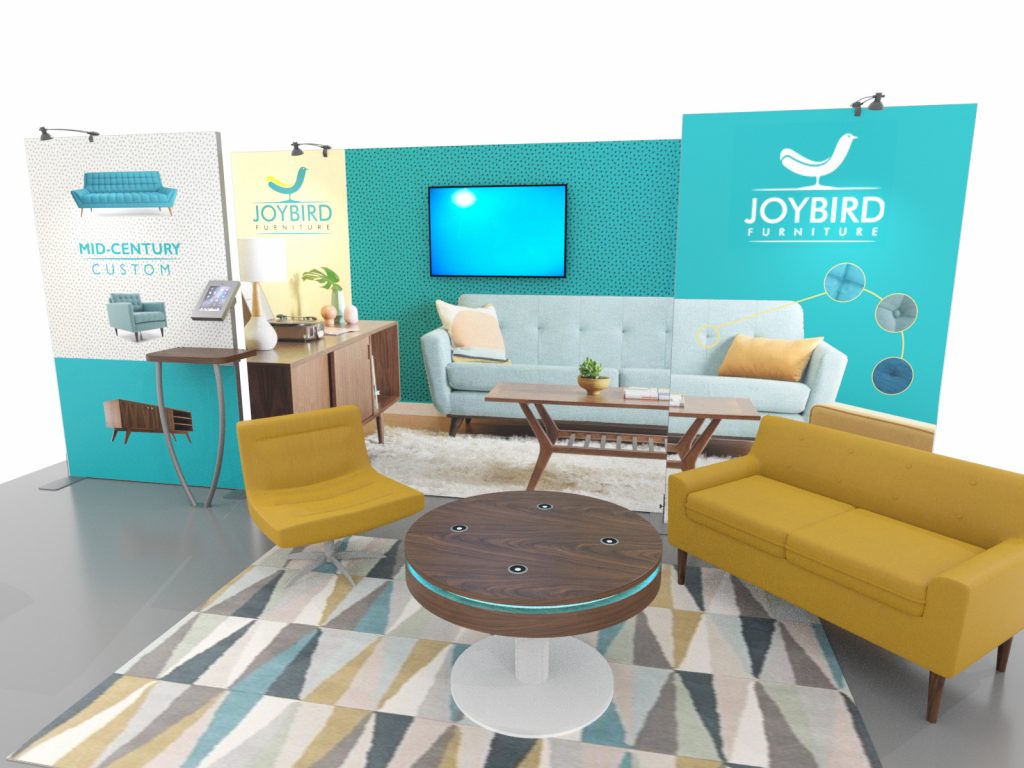
Understanding the Modular Definition in the Context of Trade Shows
Let’s consider modular from a different perspective — portable modular vs custom modular. In case you didn’t know, a portable trade show display can ship via UPS or FedEx. A portable modular display typically has more features than just a portable exhibit, such as modular counters, monitors, shelves, workstations, backlighting, etc. In other words, it’s more than just one big graphic.
A custom modular gets a little trickier depending if the emphasis is on “custom” or “modular.” Modular exhibit builders are often taking modular components and putting them on steroids. The parts may be bigger, fancier, and generally packed in small wood crates or roto-molded tubs. Each component tends to be lightweight to save on shipping but there may be lots of components. Custom builders are taking large custom components and either breaking them into smaller components or rearranging them to work in multiple pre-configured displays. Generally, there are more shipping crates, but the assembly time may be reduced. It will cost more to ship it, but you may save time on installation and dismantling.
The Advantages of Choosing a Modular Booth
Modular trade show displays are a popular choice for exhibitors whether they’re newbies to trade shows or exhibition veterans. Here are some of the advantages and benefits:
1. Versatility and Flexibility:
Mix and match components: Modular trade show booths are often constructed using interchangeable components, like panels, shelves, and counters. These components can be reconfigured to create customized layouts depending on the show. This flexibility offers exhibitors the ability to tailor their brand and budget to specific trade shows.
For example, one show may necessitate lounges and meeting spaces to interact with attendees while another show may prioritize interactive gaming or product demos. Modular design allows exhibitors to shift their marketing depending on their audience.
2. Cost-Effectiveness:
Long-term investment: Modular displays are generally more affordable over the long term since the designs are not configuration or size-specific. The reusability of the components means greater cost savings in the long run.
Reduced shipping and storage costs: The lightweight and compact packaging of modular components makes them cheaper to ship and store compared to bulky booths.
3. Ease of Use:
Simple assembly and disassembly: Modular displays are designed for quick and easy setup and takedown, often without requiring professional help. This saves you time and money on installation and dismantling at trade shows.
Freight: The lightweight components make them easy to transport, reducing shipping costs and hassle.
4. Sustainability:
Reusable components: You can reuse the same modular components for multiple events, minimizing waste and environmental impact.
Durable materials: Modular displays are typically made from high-quality, durable materials that can withstand repeated use and transportation.
5. Contemporary Designs:
Modern and sleek aesthetics: Modular displays offer a clean and contemporary look that can make your booth stand out from the crowd.
Customization options: Many modular systems offer a variety of graphic panels, lighting options, and accessories to personalize your display and reflect your brand identity.
Overall, modular trade show displays offer a versatile, cost-effective, and easy-to-use solution for businesses of all sizes to make a big impact at trade shows and events.
Innovative Designs in Modular Displays
Below are examples of innovative modular trade show booths. But this is just the tip of the iceberg when it comes to modular design. Browse through Exhibit Design Search, a comprehensive database of over 1500 exhibit designs. But don’t stop there. Most displays can be modular if the exhibit designer understands your requirements.
Portable Modular | SYK-1002 and SYK-2002
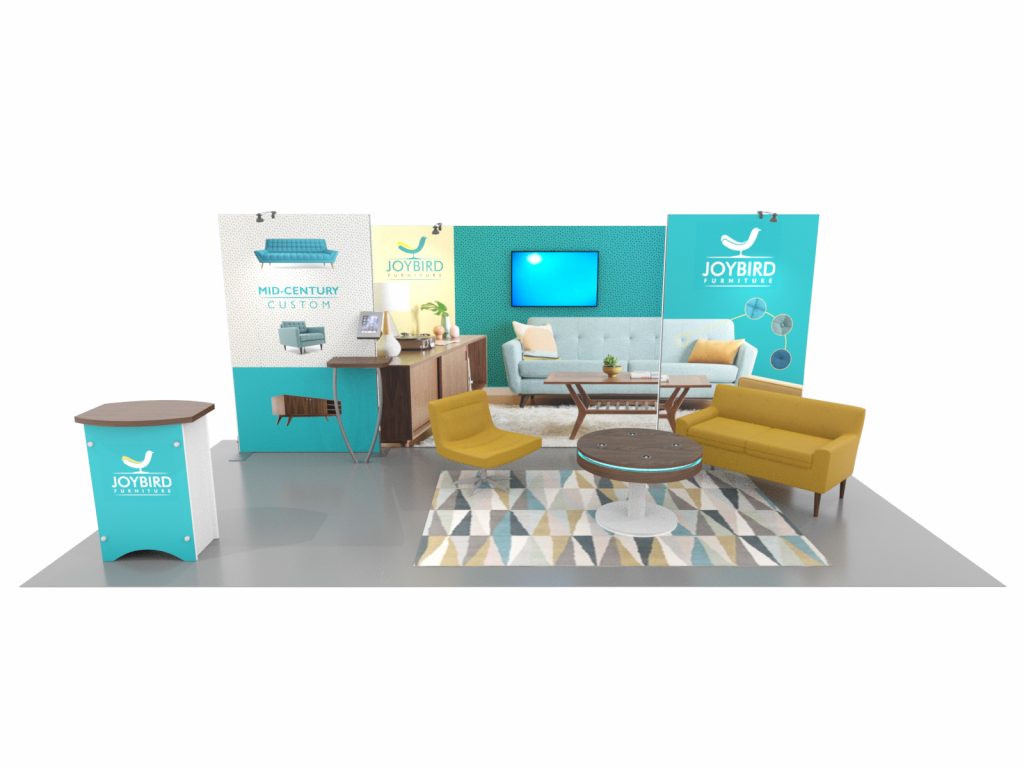
These Symphony Portable Display fraternal twins offer multiple benefits. Not only can exhibitors easily switch between 10 ft. and 20 ft. inlines, but they also allow two slightly different 10 ft. designs. In addition, the Symphony’s modular components means they can add accessories like literature trays, iPad enclosures, and counters as their marketing needs evolve. Plus, it packs in flat-pack cases for convenient shipping.
Hybrid Modular | VK-1362, VK-2400, and VK-5124
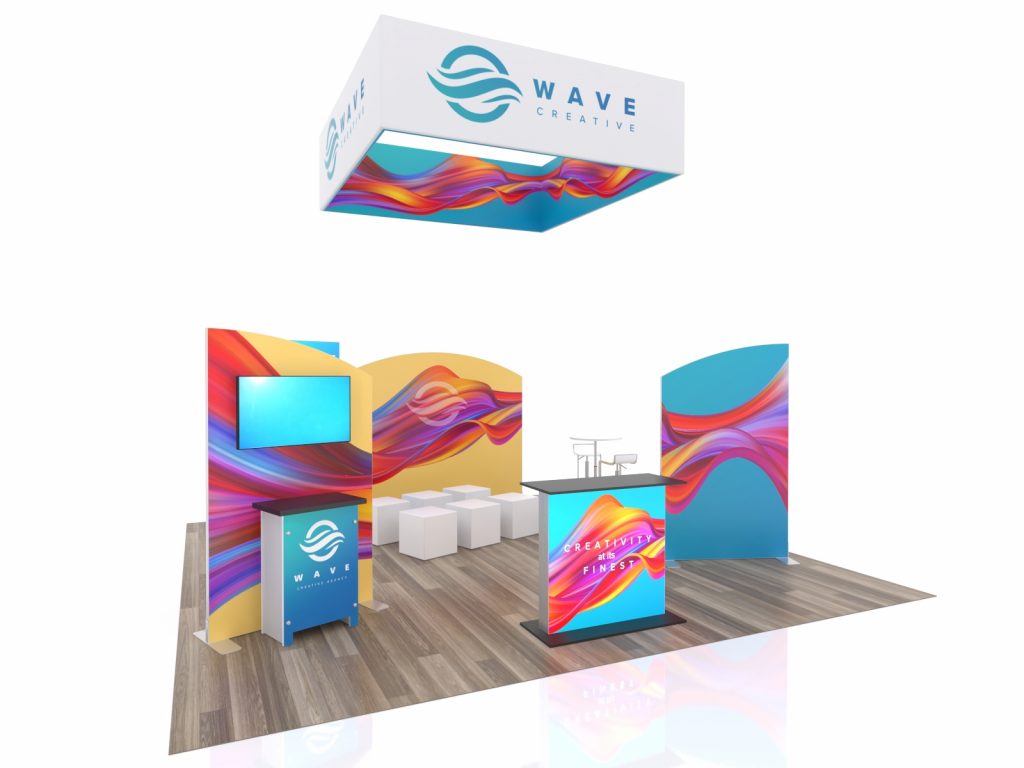
Like Portable Modulars, Hybrid Modulars are often portable, but not always. This design series, with 10 ft., 20 ft., and island configurations, offers roto-molded cases for the inline versions but the option of a wood crate for the island. The assembly is similar to the Symphony mentioned before, meaning largely tool-free, so installation is easy. The overhead sign for the 20 x 20 island elevates the overall design will ensuring visibility throughout the show hall.
Sustainable Modular | ECO-1118, ECO-2118, and ECO-4118
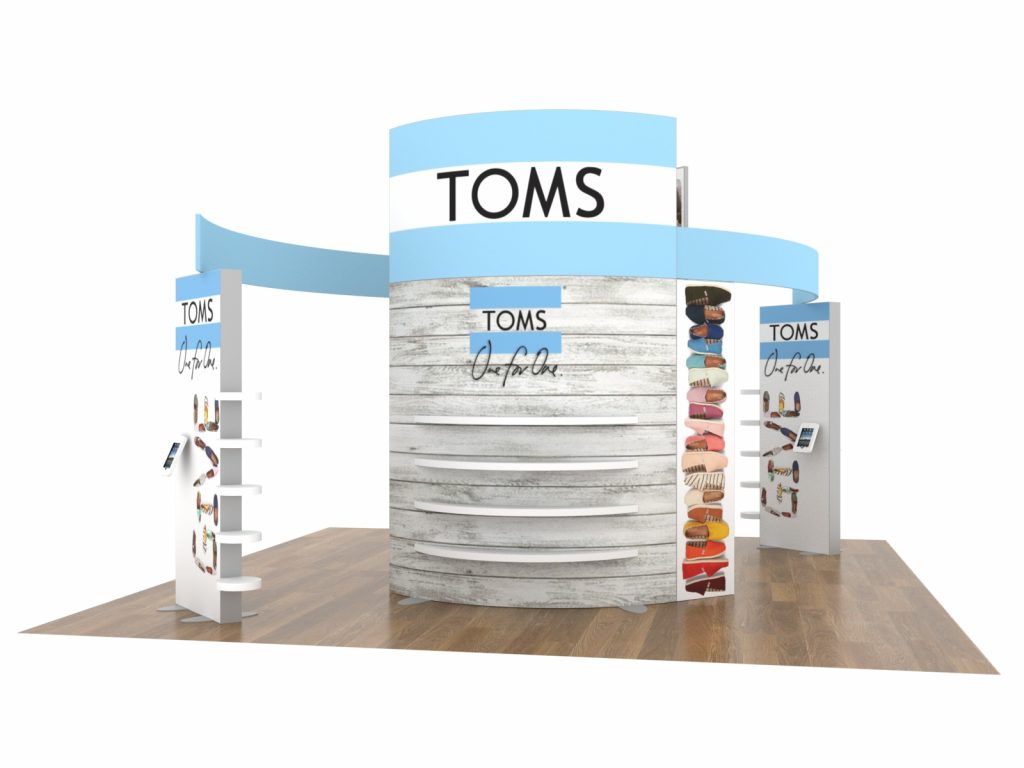
Modern eco-friendly exhibits are popular as exhibitors blend their trade show marketing with their corporate sustainable initiatives. These contemporary ecoSmart designs make it simple to shift from an upscale inline to a beautiful 20 x 20 island. The features multiple product shelves, large graphic options, and an open, welcoming architecture. There are even iPad enclosures for client engagement. The 10 ft. starts with
Custom Modular | VK-1367, VK-4046, and VK-5195
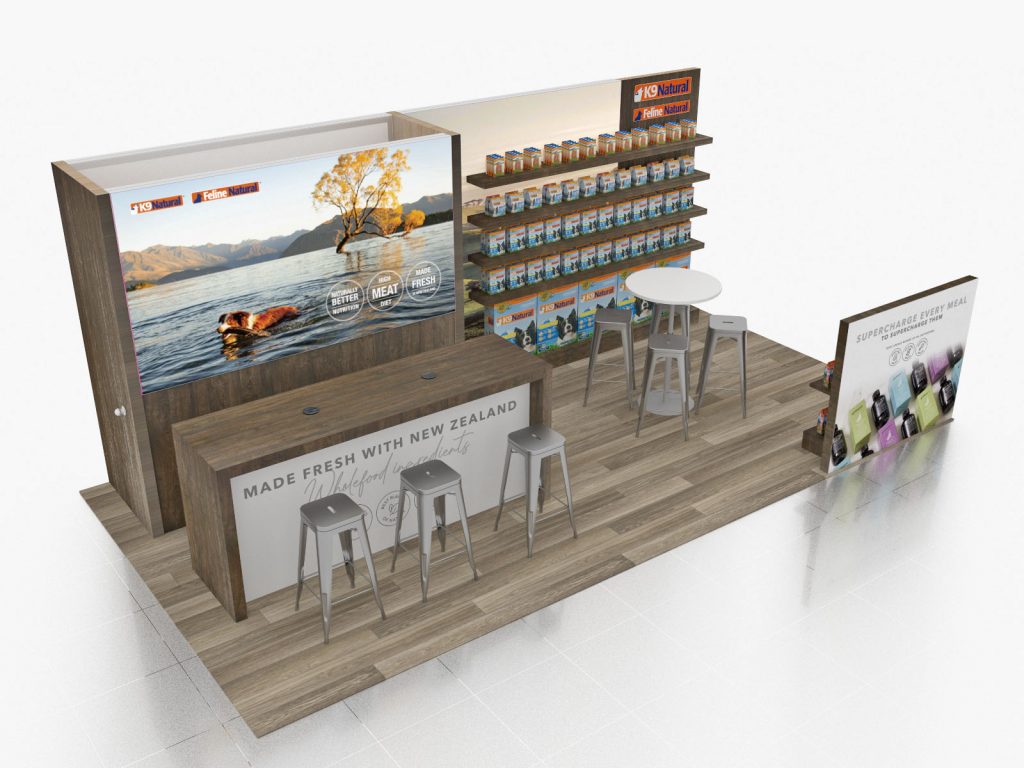
When it comes to customization and modularity, these three designs are like peanut butter and jelly. Perfect apart and together. The 10 ft. starts with a large lightbox and shelving. Then the 20 ft. expands on it with the addition of a locking closet and reception bar with locking storage. Finally, the island takes it to the next level with more shelving, more storage, and three casual meeting spaces.
BTW – Custom Modular doesn’t happen by accident. Exhibit designers are experts at creating inline and island versions when those requirements are shared during the pre-design intake meetings. Exhibits, unlike a loaf of bread, are typically not sliceable after the fact.
Modular Office Pods: A New Trend in Trade Shows
Modular Office Pods are a recent development for trade shows, events, sales meetings, or vendor conferences. The advent of modular wall systems, like the Gravitee One-Step, makes creating temporary private or semi-private meeting rooms much easier. These meeting pods incorporate large format graphics, locking doors, and accessories like monitor mounts, counters, literature trays, and shelving.
Features Include:
- Aluminum Extrusion Modular Wall Panels
- No Tools. No Loose Parts Assembly
- Double-sided Graphic Options (interior/exterior)
- SEG Fabric or Direct Print Graphics
- Flat and Curved Panels
- Full-size Locking Door
- Available for Purchase or Rental
- Accessorize with Shelves, Charging Tables, Counters, iPad Kiosks, and Storage Pedestals
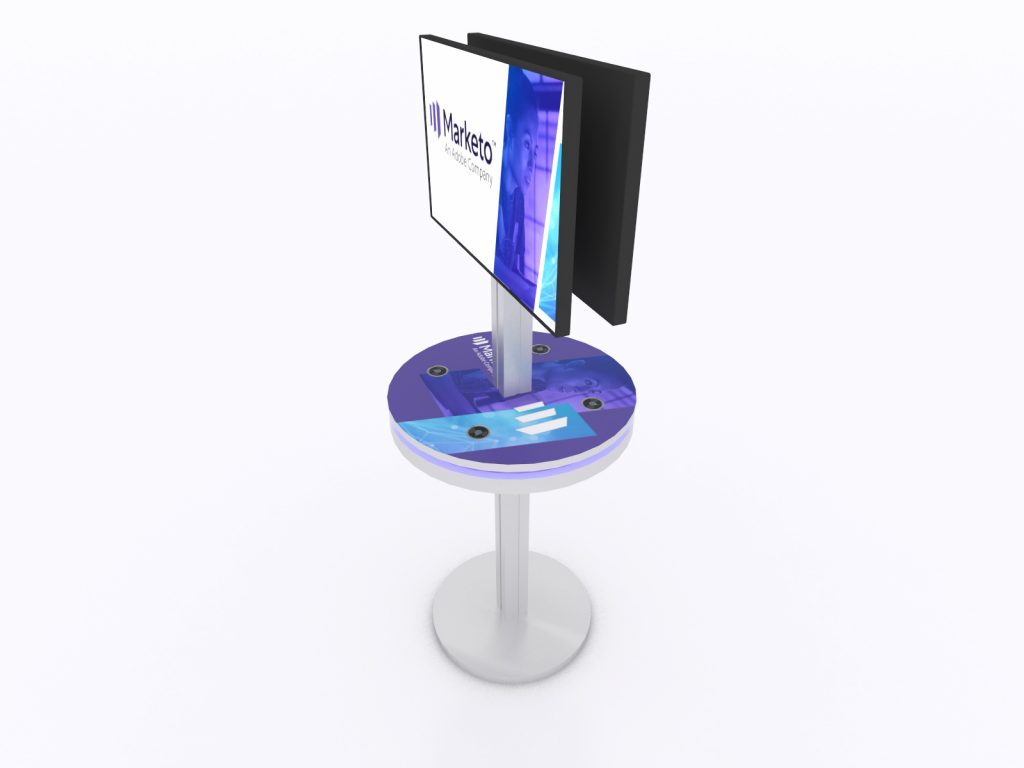
Maximizing Your Trade Show Impact with Modular Trade Show Booths
Modular is more than a recent buzzword. It’s a fresh take on exhibit design. Classic Exhibits has hundreds of modular designs for purchase or to rent. And each can be customized to fit an exhibitor’s unique marketing goals. Just ask.
For over 30 years, Classic Exhibits has been a reliable source of expertise for new and seasoned trade show marketers. The Classic Exhibits Distributor Network includes over 200 North American exhibit houses and display professionals. Find success on the trade show floor with an exhibit that reflects your marketing message. For more information, see www.classicexhibits.com and explore Exhibit Design Search or request a meeting with a Classic Distributor Partner.


